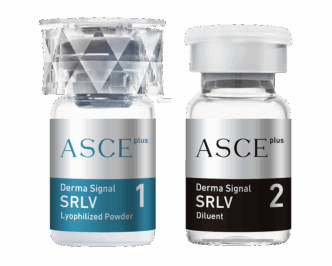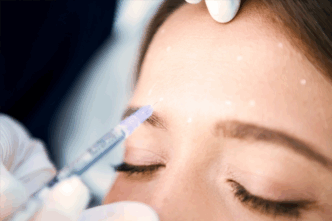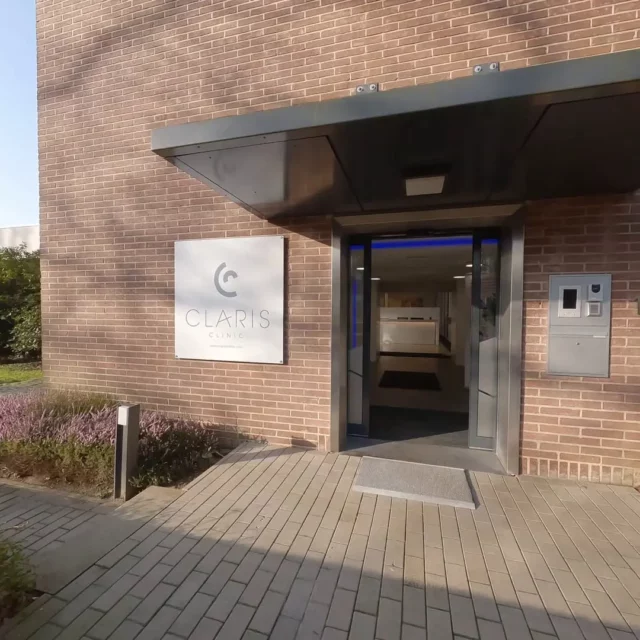What is an exosome?
Origin
Exosomes are small extracellular vesicles naturally produced by cells. Discovered in the  1980s, they were initially regarded as mere cellular waste products. Science has since revealed their vital importance: exosomes act as messengers, transporting proteins, lipids and nucleic acids between cells.
1980s, they were initially regarded as mere cellular waste products. Science has since revealed their vital importance: exosomes act as messengers, transporting proteins, lipids and nucleic acids between cells.
In the field of aesthetic medicine, this discovery has paved the way for new anti-aging and regenerative treatments, used notably in facial care and hair growth.
Structure
An exosome takes the form of a lipid membrane enclosing various active components: proteins, acids, growth factors and messenger RNA. These components enable the diffusion of active ingredients from one cell to another.
Exosomes can be compared to tiny biological “parcels”, capable of delivering their contents directly to target cells.
Functions
The main functions of exosomes are:
- Intercellular communication, essential for proper tissue function.
- Transport of repair molecules for regeneration.
- Regulation of wound healing and skin aging.
The role of exosomes in the cell regeneration process
Intercellular communication
Exosomes ensure a constant dialogue between cells. This mechanism enables biological processes to be better coordinated, particularly during recovery from injury or in aesthetic treatments.
Transporting regenerative molecules
 These small vesicles carry proteins and growth factors capable of accelerating tissue regeneration. They are used as a complement to platelet-rich plasma (PRP), already known to stimulate regeneration.
These small vesicles carry proteins and growth factors capable of accelerating tissue regeneration. They are used as a complement to platelet-rich plasma (PRP), already known to stimulate regeneration.
Regulation of aging processes
By acting on stem cells and collagen production, exosomes help slow the loss of skin elasticity, the formation of fine lines and age-related hair loss.
Exosome applications in aesthetic medicine
Fighting the signs of aging
Exosomes are increasingly used in facial care protocols. They help reduce the effects of time: loss of tone, spots, wrinkles.
Improved skin quality
Thanks to their ability to stimulate regeneration, they improve skin texture, tighten pores and bring radiance and comfort. Natural beauty is revealed.
Reduction of wrinkles and fine lines
Combined with techniques such as microneedling or enriched serum injection, exosomes reduce fine lines, smooth irregularities and promote better hydration of the face.
The advantages of exosomes over other anti-aging treatments
Efficiency
Unlike creams or simple cosmetic serums, exosomes work deep down, directly at cell level.
Security
Exosomes are ofbiological origin, limiting the risk of rejection. They are well tolerated by the majority of patients when used by qualified professionals.
Sustainability of results
The effects of exosome treatments are prolonged over time, thanks to the stimulation of the cell growth cycle. This makes them an ideal alternative or complement to platelet-rich plasma.
The exosome extraction and purification process
Techniques used
Exosomes can be extracted from a variety of sources, including blood or stem cells. In Europe, only exosomes of plant origin are used.
Purification protocols
Methods such as ultracentrifugation or chromatography can be used to obtain pure, concentrated exosomes.
Quality control
Each treatment session requires high-quality exosomes to guarantee safety and efficacy. Strict standards are applied to ensure reliable results.
Potential side effects of exosome therapy
Risks and precautions
Although exosome treatments are generally free of side effects, redness or skin sensitivities may occur after treatment.
Medical follow-up required
Personalized follow-up by a professional maximizes benefits while minimizing risks.
Long-term results
Results vary from one individual to another, but the majority of patients see a gradual improvement in the quality of their skin and hair.
Future prospects for facial exosome research
Innovative administration techniques
New methods, such as exosome-enriched patches, may soon complement injections and microneedling.
Personalized treatment
Exosome therapies can be adapted to all skin types and different needs (anti-aging, hair loss, scars, radiance).
Combination with other anti-aging technologies
Exosomes are already being tested in combination with lasers or radiofrequency to create even more powerful and fashionable treatments.
Testimonials from patients treated with exosomes
Positive experiences
Many patients report a feeling of comfort and a simplified care routine thanks to these innovative treatments.
Satisfactory results
Visible improvement in hair growth, reduced hair loss, firmer skin and brighter complexion.
Impact on self-confidence and quality of life
Exosomes deliver a subtle but lasting transformation, restoring radiance and self-confidence.
Regulation of exosome treatments in aesthetic medicine
Legal framework
The use of exosomes is strictly regulated by medical and ethical standards.
Medical ethics
Respect for the patient and his or her safety is paramount in all protocols.
Public access to treatments
Although mainly the preserve of specialized clinics, these innovative treatments should gradually become more accessible, both in the office and at home in the form of serums.
Regenerative medicine experts’ recommendations for exosome therapy
Choice of healthcare professional
It is essential to turn to a qualified doctor experienced in regenerative medicine.
Pre-treatment preparation
A precise diagnosis of the skin and hair allows us to adapt the protocol.
Post-treatment follow-up
Regular follow-up ensures that results are maintained and that patients remain comfortable.
Conclusion
Exosomes represent a major breakthrough in the fight against aging. Their ability to regenerate tissue, stimulate hair growth, enhance skin beauty and reduce scarring makes them an essential tool in modern aesthetic medicine.
Thanks to research and new trends in regenerative care, exosomes are paving the way for more natural, sustainable and personalized aesthetic medicine.






